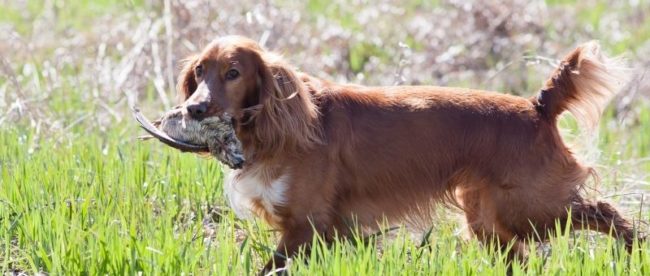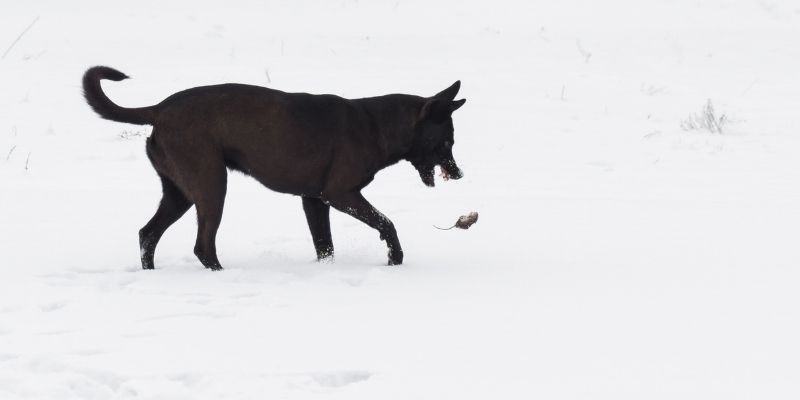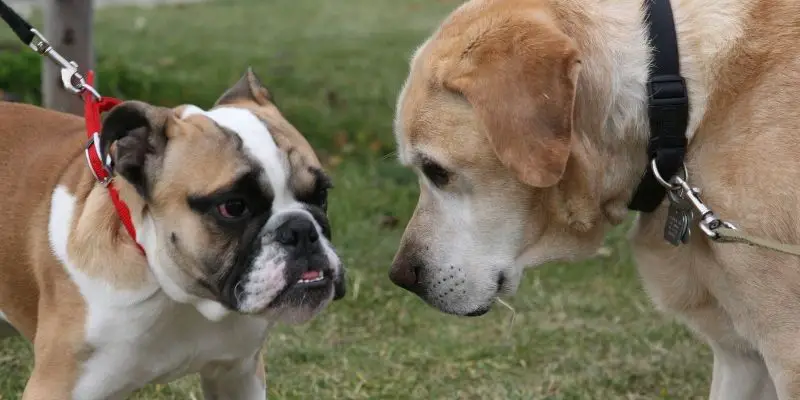What Precautions Should You Take When Walking a Dog with a High Prey Drive?

When you have a dog, dog walking becomes a must! All dogs are different, so some might be able to lounge in the house for days on end without a walk. Still, others will need to be walked multiple times a week due to naturally high energy levels. For some, a 20-minute walk is all you need, but for others, you may need to take up to one hour outside!
In general, depending on the study you look at, an average of 60% of dog owners walk their dogs regularly. If you’re one of those owners who doesn’t walk your dog, you really should! It is crucial not only for your dog, but it has many benefits for you as well!
However, as I said before, all dogs are different. While some dogs can engage perfectly well with other animals, some have a high prey drive. These kinds of dogs are hunters and can be difficult to walk as they may try to chase after smaller animals that they see, and in some cases, other pets.
Suppose you’re scared of walking your dog with a high prey drive, or you’re not sure exactly how to. In that case, this article will show you the ropes and what precautions you should take when walking a dog with a high prey drive?
Do you have a specific question about walking the dog with the high prey drive? Then use the table of contents below to jump to the most relevant section. And you can always go back by clicking on the black arrow in the right bottom corner of the page. Also, please note that some of the links in this article may be affiliate links. For more details, check the Disclosure section at the bottom of the page.
Which breeds have a high prey drive?

Prey drive can be summarized as how eager your dog is to hunt or chase after prey. The prey instinct in dogs is strongly tied to the specific breed of dog. Some breeds being raised to help with hunting, so they are naturally more inclined to chase after prey.
Suppose you have noticed your dog chases after smaller animals quite a lot, even against your commands. In that case, it likely has a high prey drive.
The following are just some of the breeds of dogs with high prey drive.
- American Bulldog
- American Foxhound
- Alaskan Malamute
- Airedale Terrier
- Beagle
- Basset Hound
- Cane Corso
- Collie
- Dachshund
- Dogo Argentino
- Cocker Spaniel
- Fox Terrier
- German Shepherd
- Greyhound
- Jack Russel Terrier
- Miniature Schnauzer
- Pointer
- Rottweiler
- Rhodesian Ridgeback
- Shikoku
- Whippet
These aren’t all of them, but if you have any kind of terrier, pointer, spaniel, or hound, it is likely to be one of those high prey drive dogs.

How to walk dogs with high prey drive?

Walking dogs is an activity that has many benefits not only for the dog but also for you as the owner! Since dog walking is important, you’ll have to figure out how to tame prey drive in a dog if you have a hunter.
To prevent your dog with high prey drive from dragging you all around the park at the sight of a squirrel, you can follow some of these steps to remain in control and reduce risk to others.
- Positive reinforcement is vital. When your dog does good things during your walk, you need to realize that what it is doing is the expected behavior. Give it a treat when it doesn’t pull on its leash, when it makes eye contact with you, or if it does anything else that you want it to. This is part of how to train a dog with high prey drive when outside.
- Play at home before the walk. There’s no harm in it. Do this while you’re still at home, such as in your backyard, to burn off some extra energy. You can play fetch, tug on a rope, or any other games that your dog may love.
- Be on the lookout for potential prey. As much as you might have confidence in how you’ve trained your high prey drive dogs, you must still always be aware of anything that might grab their attention. If you see any prey that they might jump after, do your best to redirect their attention. This can include changing their route or giving them treats or toys while walking.

Precautions to take when walking dogs with high prey drive

There are some basic precautions that you should always observe when attempting prey drive training for a dog that you want to walk. These precautions don’t replace proper training, but they ensure that training is effective and other animals and people are not at risk.
These precautions include:
- Always ensure that your dog is leashed. This might seem obvious, but never walk high prey drive dogs without a leash.
- If you want them to be without a leash, only do that within enclosed spaces like your home or yard.
- Keep them as far as you can from animals and other people’s pets. You must keep them away from unknown children as much as you can.
- Try to plan out the route you plan to walk beforehand. Your dog will be more exploratory on new routes. And you also can’t account for which animals you may potentially come across. It will all add to the possibility that your pup might follow the instincts, and you want to avoid that.
Credits: thanks for the cover photo to Canva.

Disclosure: At pawtypooch.com we only mention the products that we’ve researched and considered worthy. But it’s important to note that we are a participant of several affiliate programs, including VigLink, ShareASale, Skimlinks, and Amazon Services LLC Associates Program, an affiliate advertising program designed to provide a mean for us to earn fees by linking to Amazon.com and affiliated sites. As an Amazon Associate pawtypooch.com earns from qualifying purchases. Also, please note that pawtypooch.com does not intend to provide veterinary advice. All published articles are meant for informational purposes only. And this information should not be substituted for professional veterinary consultation.

